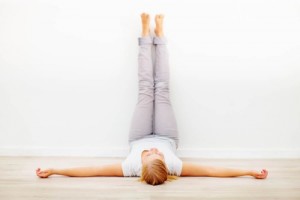
Warm up
Before you begin any physical activity, warming up is a key factor in preventing injury. Take a walk, even on the
spot. Ten to 15 minutes should do it. Don’t forget to lift your knees and gently swing your arms.
Stretch before you start
To plant and rake without the ache, do each of these stretches five times. Don’t bounce, jerk or strain.
Stretches should be gentle and should not cause pain.
Upper Body
YOUR SIDES
1. Extend your right arm over your head.
2. Bend to the left from the waist.
3. Hold for 15 seconds and repeat on the other side.
YOUR ARMS AND SHOULDERS
1. Hug yourself snugly.
2. Slowly rotate at the waist as far as is comfortable to the left, then to the right.
YOUR BACK
1. In a seated position, bend forward from the hips, keeping your head down.
2. Reach for the ground.
Lower Body
YOUR THIGHS
1. Face a wall or tree and support yourself against it with one arm.
2. Bend your right knee and grasp your ankle or pant leg with your left hand.
3. Hold for 15 seconds and repeat on the other side.
YOUR HAMSTRINGS
1. Stand.
2. Reach your hands to the sky.
3. Then bend at the waist and reach toward your toes.
Dr. Roger Singh










